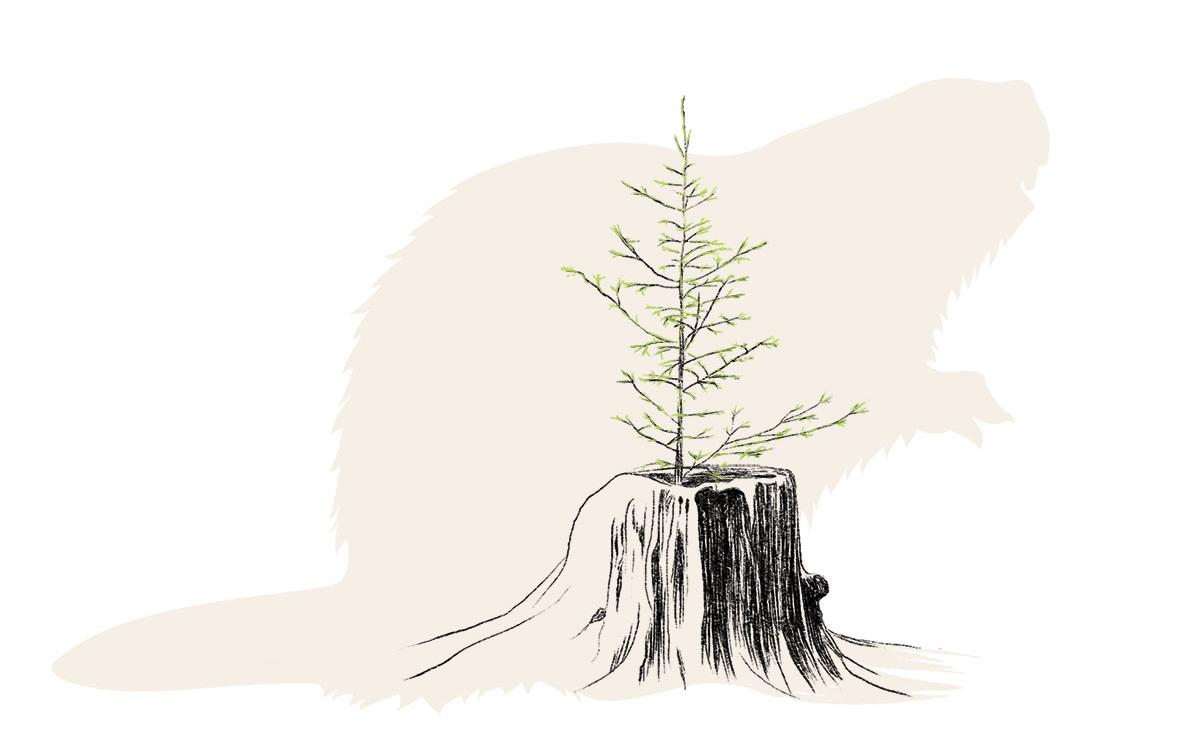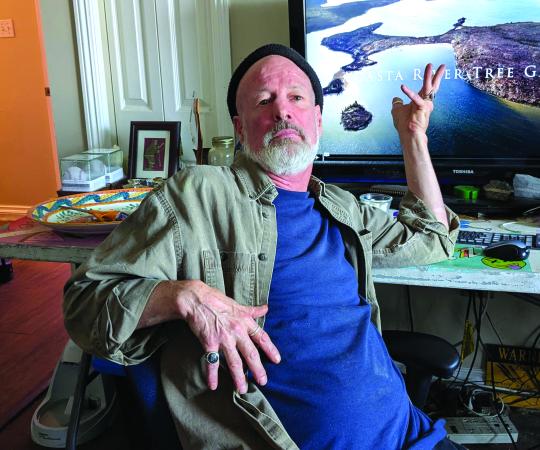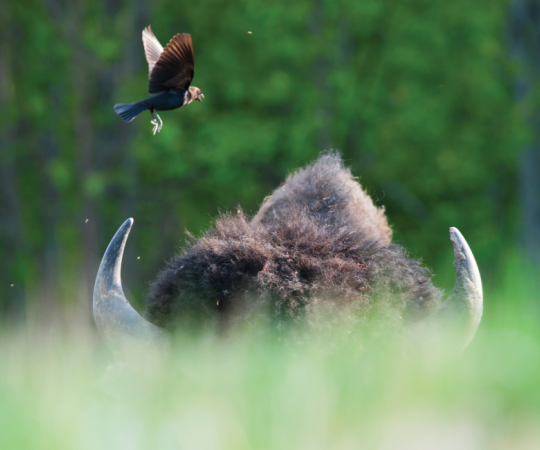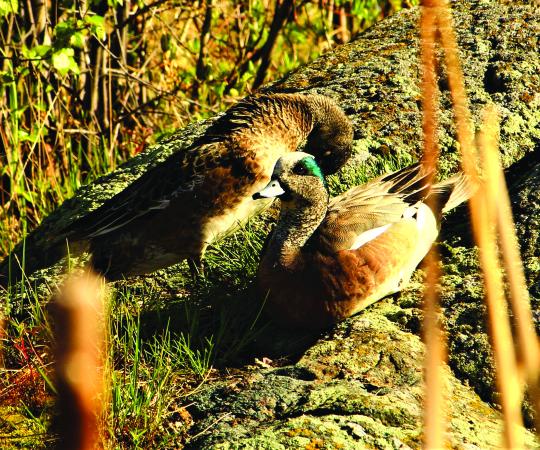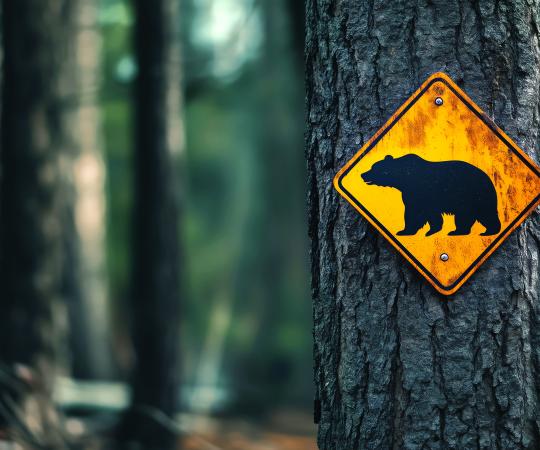On a blustery August evening last year, the wind felled an old white spruce tree near the banks of the Weledeh (Yellowknife River), just off Ingraham Trail. The history of this particular tree is intertwined with Dene history and the story of Yamozha. It’s long been a site where travellers stop to pay respects, wishing for good health or a safe journey at the onset of a long canoe trip.
While no one was around to hear the tree come down, it certainly made a sound in Fred Sangris’ home.
“I got a call telling me the tree fell down. And then another call and another call,” says Sangris, a Yellowknives Dene elder and historian.
In the following days, people came to pay their respects and make offerings as a flatbed crew prepared to move the hefty trunk to the nearby Weledeh cultural site for safe keeping. It was moved to a secure location because the story of the sacred tree didn’t end when the wind brought it down. “Protect the tree and you’ll protect our culture,” says Sangris.
The sacred tree’s origin begins with a giant beaver lodge where the Weledeh flows into Great Slave Lake. According to Sangris, about 7,000 years ago giant beavers chased from other Dene lands made their way into Weledeh, settled at the river’s mouth and built a lodge, damming the river and disrupting a site known for bountiful fish harvests. The giant beavers terrorized anyone on the water, so the people turned to Dene hero Yamozha for help. Yamozha took his snow shovel and cracked open the lodge, scattering the beavers into the lake. The shovel got stuck and Yamozha left it there: it became the sacred tree. “That whole area is very sacred. We’re connected to Yamozha for what he did 7,000 years ago,” says Sangris. “To this day, we still honour the tree.”
The Yellowknives Dene First Nation (YKDFN) held a community workshop to determine what will happen to the trunk and the site where it stood for generations. The daylong event at Chief Drygeese Hall in Dettah brought a few dozen community members and elders together with experts to answer questions regarding historical preservation and botany.
Johanne Black, the YKDFN director of lands and development who organized the workshop, says Indigenous communities are usually presented with options concocted outside the communities, meaning communities are ostensibly given choice—about a mining project or hunting regulations—but only from a limited, predetermined list of options. Not so with the sacred tree, Black says. “This process is the community’s process from the very beginning. It’s total agency.“
Some suggested putting the tree back up at the site, which would likely require running a pole through it attached to a sturdy base. The problem is that the large base required to support the tree would likely put future growth at the site at risk. Others suggested distributing branches to community members for personal use (in healing ceremonies, for example), keeping a large branch for use in community ceremonies or using lumber from the tree for a cross at the site, benches to place around a sacred fire site, or a new church.
While the old Weledeh tree is gone, its root system remains at the site and could help regrow a new tree, continuing a cycle that possibly started thousands of years ago, according to Colin Laroque, a Metis professor at the University of Saskatchewan’s School of Environment and Sustainability specializing in dendrochronology and tree ecosystems, who was invited by the YKDFN to give a presentation at the workshop.
The oldest root system—the “mother” roots—ever found date back 50,000 years. The sacred tree’s root system might be 8,000 years old. In fact, the sacred tree might not be just one tree, but rather the latest in a long succession of trees growing at the site from saplings connected to the same roots, Laroque says. Saplings could be nurtured to grow another tree on the site, or cones from the old tree could be replanted there. Either way, new growth will be genetically the same as the original.
The most popular options have been submitted to elders for consideration and guidance. Sangris is undecided but seemed to like the idea of nurturing a new tree.
“What will happen is that another tree will grow and our job will be to protect that little tree as it grows,” says Sangris. “It will be a new tree but it will still be Yamozha. It will still be Yamozha’s shovel. It will still be Yamozha’s story.”

